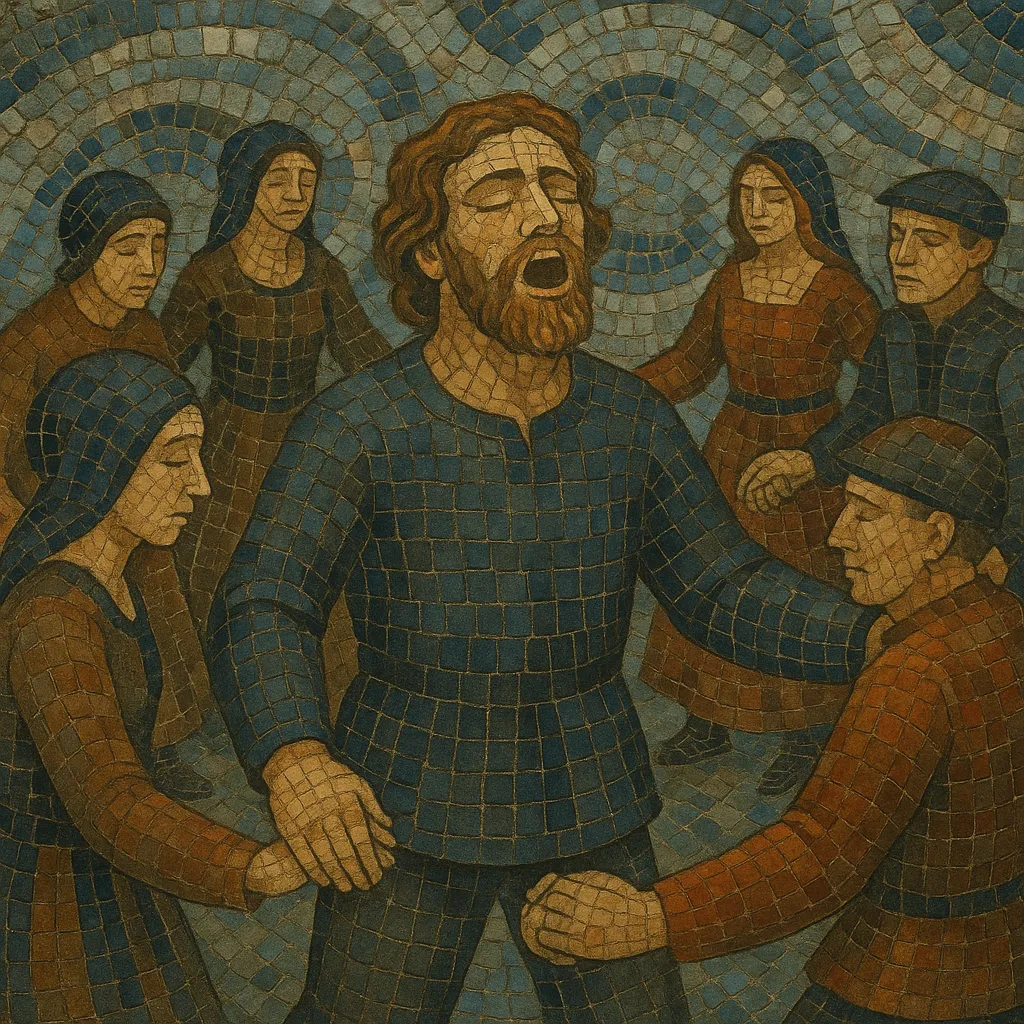
Faroese folk music centers on the kvæði (long narrative ballads) sung for the traditional chain dance, a communal, circular line-dance in which a lead singer (skipari) intones verses and the circle answers with a fixed refrain.
Historically performed a cappella and in Faroese language, the music preserves medieval Norse balladry in strophic, modal melodies that repeat across many verses while the dance keeps time through steps rather than instruments. Over centuries, hymns (especially Kingo-style psalms) and later fiddle/accordion/guitar accompaniments entered practice, but the unaccompanied ballad-leading style remains the core of the tradition.
Themes range from heroic sagas and legendary kings to local history and satirical tættir, carried by straightforward, memorable tunes designed for collective participation and endurance.
Faroese folk music grew from the Norse ballad tradition brought by settlers in the Middle Ages. The kvæði form—long, episodic narrative ballads—was preserved on the islands through communal chain dancing, where the sung text leads the movement rather than instruments. This setting helped maintain archaic strophic structures, modal melodies, and call-and-response patterns.
For centuries the repertoire was transmitted orally in homes and village gatherings. From the 18th and 19th centuries, Faroese scholars and visiting folklorists began to notate and publish the ballads, culminating in comprehensive editions (often referenced under "Føroya kvæði" / Corpus Carminum Færoensium). Standardization of Faroese orthography in the 19th century further supported documentation and teaching of lyrics.
Alongside ballads, hymn singing—especially Kingo-style psalms—took root, shaping local vocal style with slow, ornamented delivery in church and home worship. This sacred layer coexisted with the secular dance tradition, reinforcing a strong a cappella culture.
Local dance societies formed to safeguard the chain dance and kvæði repertoire, organizing regular gatherings and festivals. Radio, recording, and the growth of Faroese cultural institutions helped disseminate both archival and newly performed material, keeping community participation central.
From the late 20th century onward, Faroese artists brought the tradition to international stages, sometimes adding fiddle, accordion, guitar, or modern arrangements while retaining the central role of Faroese language and the skipari-led form. The tradition has also influenced Nordic folk-rock and metal scenes, where kvæði melodies and themes appear in new stylistic contexts.

